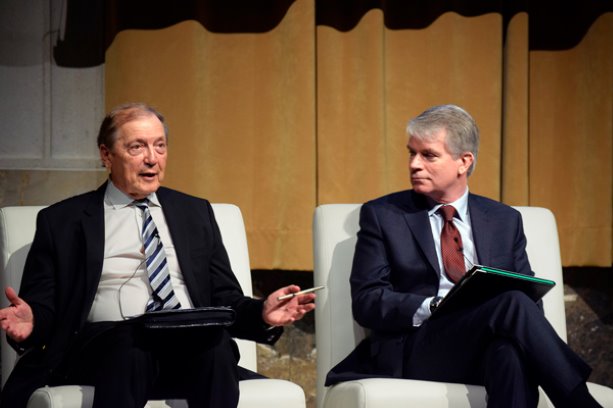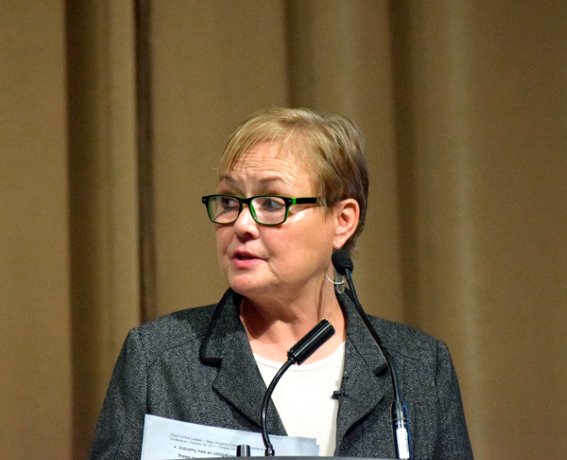The Association of Consulting Engineering Companies — Canada (ACEC) is throwing its support behind the national Northern Corridor concept, with ACEC president and CEO John Gamble issuing a call to arms to federal politicians at the recent convention and rallying delegates to embrace the cause.
Gamble hosted a panel discussion on the merits of the coast-to-coast infrastructure plan idea on day three of the convention in Ottawa Oct. 25. That same day ACEC members stressed the importance of initiating studies on the corridor as one of three messages they brought to advocacy meetings with members of Parliament.
During the panel discussion, an ACEC member speaking from the audience suggested the engineers form a working group to take next steps on the corridor. Leon Botham, executive vice-president with Clifton Associates, explained his intentions in an email after the conference.
"I suggested in my comments that ACEC should work with other groups to promote the idea of the corridor, including all levels of government and work to develop a plan that could be presented," said Botham. "In the past, ACEC has worked with a variety of groups to advocate for policy that has a significant impact on our business, and we should continue to do that for the corridor."
The current Northern Corridor discussions represent a revival of an idea proposed by former Canadian General Richard Rohmer in a policy paper during Canada’s Confederation year, 1967. The governing Liberals showed no enthusiasm in moving forward with the Rohmer plan at that time.
The concept was revisited in 2014 by planner John van Nostrand in an article published in the Walrus magazine, taken the next step in a 2016 paper released jointly by the University of Calgary’s School of Public Policy and the Montreal-based think-tank CIRANO and further supported in a report released by the Senate Committee on Banking, Trade and Commerce in June.
The Senate report calls for the development of a national infrastructure right of way across Canada’s north and near-north, accommodating such infrastructure assets as roadways, railways, pipeline and communication projects. Advantages cited include access to resources, the construction of new trade pathways, increased access and economic advantages for remote First Nations communities and more efficient environmental approvals.
"We had an opportunity to move forward on this 50 years ago and we squandered it," said Gamble in an interview. "Just think where we could have been had this moved forward."
The panel gathered together three principals in recent discussions — van Nostrand, Senator David Tkachuk, chair of the banking committee, and Andrei Sulzenko, an executive fellow at Calgary’s School of Public Policy and co-author of its report — along with B.C. Chief Corrina Leween of the Cheslatta Carrier Nation, vice-chair of the B.C.-based First Nations Major Projects Coalition.
"The panellists came into this from different perspectives," said Gamble. "Whether it’s from the purely trade aspect, whether it’s the empowerment of First Nations, whether it’s an opportunity to connect our communities across the country, these various objectives all came to the same conclusion, or the potential conclusion, which is the concept of the corridor. If that doesn’t scream this is worthy of consideration, nothing will."
During discussions, Sulzenko said the corridor idea began to resonate for him and his colleagues in 2015 when former U.S. President Barack Obama shut down the Keystone pipeline plan. It was a political decision, antithetical to the spirit of NAFTA, he said.
"It was becoming more and more apparent that relations and trade access with our southern neighbour was starting to erode," said Sulzenko.
Now, two years later, with Trump in power and NAFTA more directly threatened, Canada can no longer rely on the U.S. for access to their market so an east-west corridor that enables easier trade with Asia and other markets becomes an important alternative, he said.
Van Nostrand, whose consulting practice with SvN sees him active in community development among northern First Nations, compared the state of Canadian nationhood in 1967 to today. The potential of the boreal corridor, as he calls it, has been shown with the development of numerous pockets of resources from the oilsands to Saskatchewan’s potash mines and more. In the next 75 years Canada’s population could triple, he said, driven in part by First Nations growth but mainly through immigration. Sixty to 80 per cent of Canada’s population growth will come from migration, he said.
Using the model of Scandinavia, where cities thrive in northern climates, Canada could accommodate new Canadians and the growth of First Nations along the northern corridor and enable strong resource development, he said.
It will take time, he said, but looking back 100 years, "The Prairies took time."
Indigenous chief Leween said there is a willingness among First Nations to embrace developments like the northern corridor but the communities have to be involved day in and day out.
"The table has to be set with them, in consultation with them," said Leewen.
"We are not looking for handouts, we are looking for involvement in the economy," she said.












Recent Comments
comments for this post are closed